The Mountain Everest Max Mechanical Keyboard Review: Reaching New Heights in Build Quality
by E. Fylladitakis on November 17, 2021 10:45 AM EST- Posted in
- Peripherals
- Cherry MX
- Mechanical Keyboards
- Mountain

Mountain is a newcomer in the PC peripherals industry. The German-based company started out a couple of years ago, kicking off their business with just a single mouse model. More recently, last year the company made a bold move by putting up their first (and rather unusual keyboard) for crowdfunding. Of course, the bold move was not the crowdfunding itself – this is a tactic that many companies result in nowadays, especially when they want to weigh an uncertain market demand – rather, it was the modular nature of the keyboard.
That keyboard became the Everest. Designed with maximum customizability in mind thanks to its modular parts, the Everest has been built to compete as a top-tier mechanical keyboard, with all of the many advanced features come with the territory. And, as we'll see in our review, Mountain didn't just go for feature parity – to produce a keyboard as good as the best keyboards on the market. Instead they've seemingly gone one better, constructing one of the best built keyboards we have ever seen at AnandTech.
Ultimately, Mountain's engineering efforts have led to two different Everest products. With the modularity of their design serving as the marquee feature for the Everest, the flagship product for the keyboard lineup is the Everest Max, which is what we're reviewing today. The Everest Max is the whole kit and caboodle, as it were, offering the base tenkeyless keyboard as well as all of Mountain's additional modular components. Meanwhile, for those who only need a tenkeyless board without the modular frills – and with a lower price tag – Mountain also offers the Everest Core, which true to its name, only includes the base keyboard.
Packaging and Bundle
We received the Mountain Everest Max in a very cleverly designed cardboard box. The artwork on the box itself is minimal but it reveals tons of information once opened, and designed in such a way that will catch the eye of the user that opens it. It also provides outstanding shipping protection to the keyboard and its components. Every component comes into its own cardboard box, neatly packed inside a drawer underneath the compartment where the core of the keyboard sits.
As we received the Max version of the Everest, we also received all of its modular parts available to this date. These are but two – a Numpad and a media dock. The company also includes tilt adjustment feet, a normal Esc keycap, five testing Cherry MX switches, a quick start guide, a few stickers, and a USB cable. The USB cable is removable and it has a Type-C connector on the keyboard’s side and a USB Type-A connector on the PC side. Mountain also includes a Type-C adapter, for those wishing to attach the Everest Max directly to a Type-C host port.
The Max version also benefits from the inclusion of a high-quality, magnetic palm rest. It is cushioned and extremely soft to the touch. The magnetic grip on the keyboard is very light, perhaps too light, which can be a good or bad thing depending on how forceful users are with their wrists. The light magnetic force allows for it to be very easily removed and cleaned, without even having to move the keyboard a tiny bit – but this also means it can be unwittingly moved during a heated gaming session.
The Mountain Everest Max Mechanical Keyboard
The Core of the Everest keyboard is not unlike most tenkeyless mechanical keyboards out in the market. If not for the subtle company logo at the top of the chassis and the silver Esc keycap, it would be difficult for most people to differentiate the Everest from other tenkeyless keyboards in the market.
We received the US/International version of the keyboard. It has a typical ANSI layout, with seven 1.25x keys at the bottom row plus a full-size 6.25x Space Bar key. Mountain is using a clean, rounded fond on the keycaps. The standard keycaps are made from ABS but Mountain offers an upgrade to double-shot PBT keycaps for roughly $30 more. There are no extra buttons on the Core of the keyboard.
The top of the keyboard is made out of aluminum, with a straight brushed surround and a circularly brushed top. This creates an eye-catching visual effect but some users may find it unappealing, as it does look like someone went crazy with a wire brush on it.
The included palm rest matches the Core keyboard perfectly and is very comfortable to use. However, once the Numpad is attached, the palm rest does look aesthetically out of place. It is not necessarily uncomfortable as most people do not rest their wrists over the Numpad but it is making it seem as if the Numpad is a foreign body to the rest of the keyboard.
Once all of the modular components are installed, the Everest Max ceases to be a simple tenkeyless keyboard and its true potential can be clearly seen. The numpad has four mini-screen keys on top of it, and the media dock has an LCD with a rotating dial alongside the small media control buttons and tiny informative LEDs.
Users can configure the four display keys on the Numpad and the rotating dial LCD on the media dock via the keyboard’s software. It would not be an exaggeration to say that most (if not all) of the Everest’s advanced features reside on the modular parts.
The bottom part of the keyboard is plastic, with three wide anti-slip strips and two circular tilt feet. There are many pathways to cleanly route the cable out of the keyboard’s connector at the center, including towards the front side of the keyboard.
At the rear of the keyboard, we find two connectors, one Type-C connector, and one Type-A connector. The Type-A connector works just like a normal hub port and users can connect any USB device to it. The Type-C connector is meant as an attachment point for the media dock. Two more Type-C connectors can be found on either side of the keyboard, which are meant for the numeric pad.
Underneath the keycaps of our sample, we found original Cherry MX Red switches. Mountain offers the Everest with either Cherry MX Red, Blue, or Brown switches. This is one of the very few keyboards in existence with original Cherry MX switches that are hot-swappable, allowing the user to change the switches of the keyboard at will. The switches are the RGB variants of course, with clear bodies. Mountain is using typical Cherry MX cross-type supports for the larger keys.
The RGB lighting on the Everest Max is crisp and clear, yet not too strong. It is strong enough, especially for those who are going to use the keyboard in relatively dark rooms, but we have seen stronger backlighting with the same Cherry MX switches in the past. It is possible that this may be but an illusion, as the very dark surface of the keyboard absorbs nearly all light, negating any backlight bleed.
Opening the keyboard up reveals another surprise, as we found an exceptionally well-designed and assembled device, going beyond even what we usually see even on top-tier products. This might be the first keyboard that we have seen the manufacturer using gap-filling foam material to soundproof and enhance the assembly mechanically. There may be a downside here though, as the material may trap moisture if someone spills a lot of liquid on the keyboard.
The heart of the Everest is a Holtek HT32F52352 ARM processor. This is a 32-bit microcontroller with a 48 MHz operating frequency and 16 kB embedded SRAM. It is quite a bit of an overkill for a keyboard, yet it is always good to see some overkill on such top-tier performance devices.


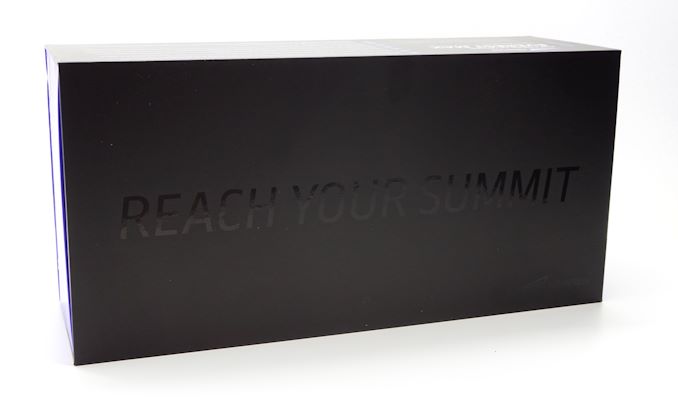
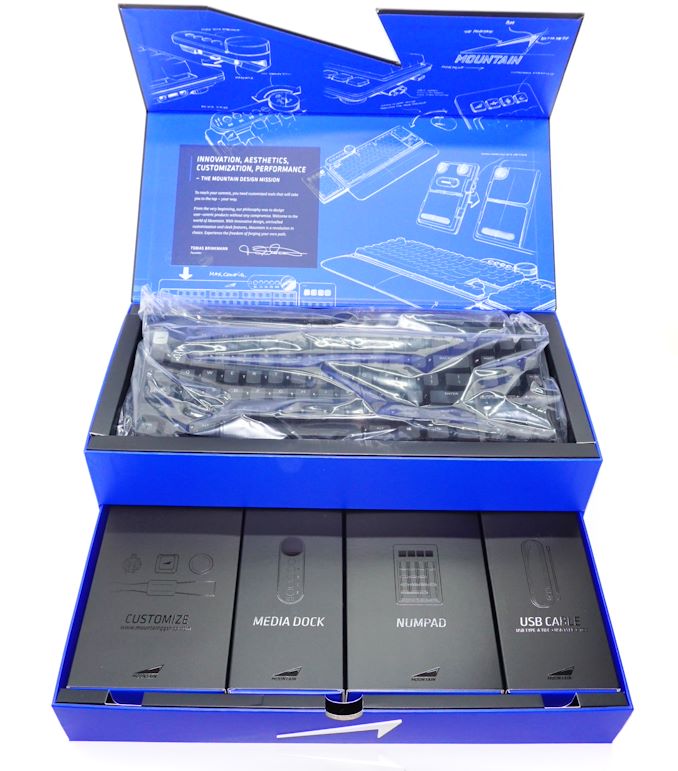
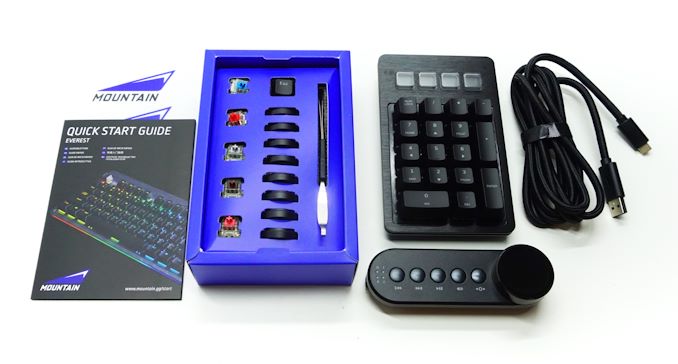

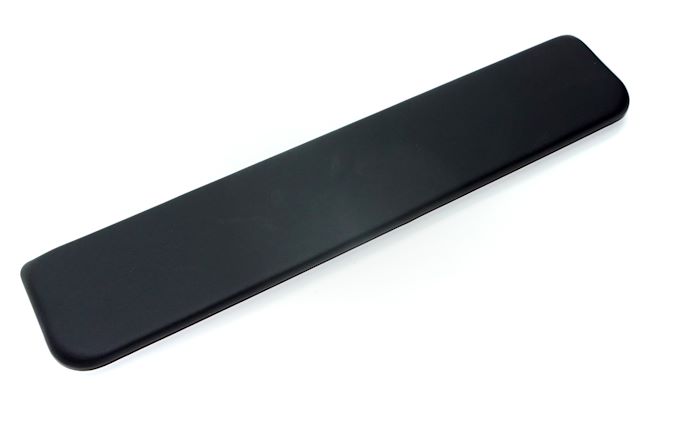
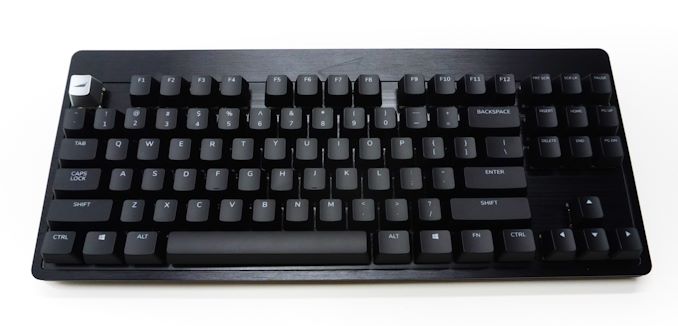
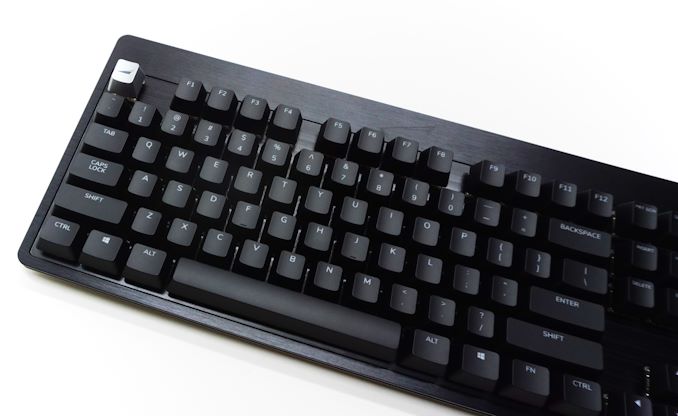
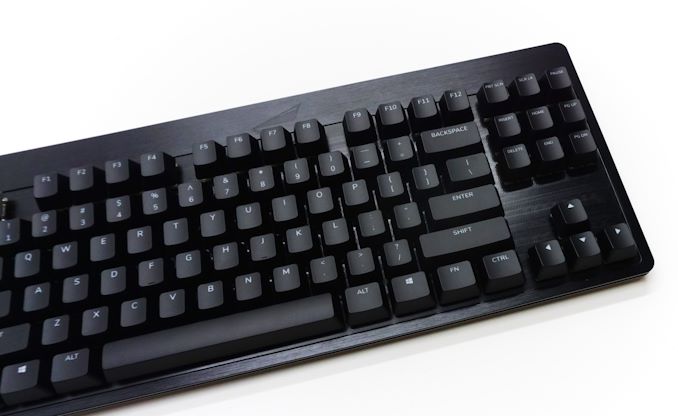
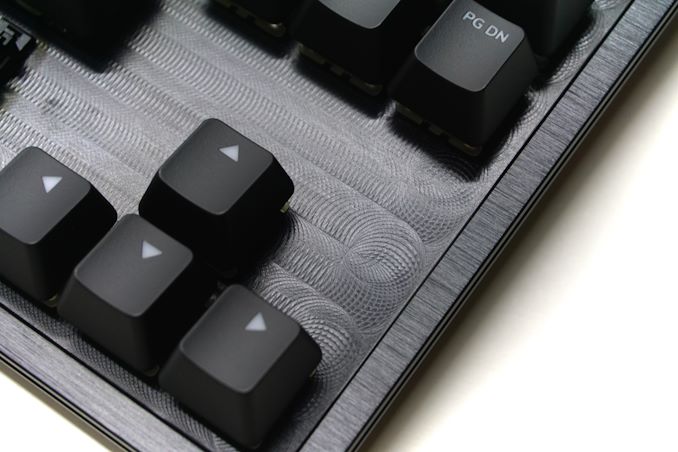
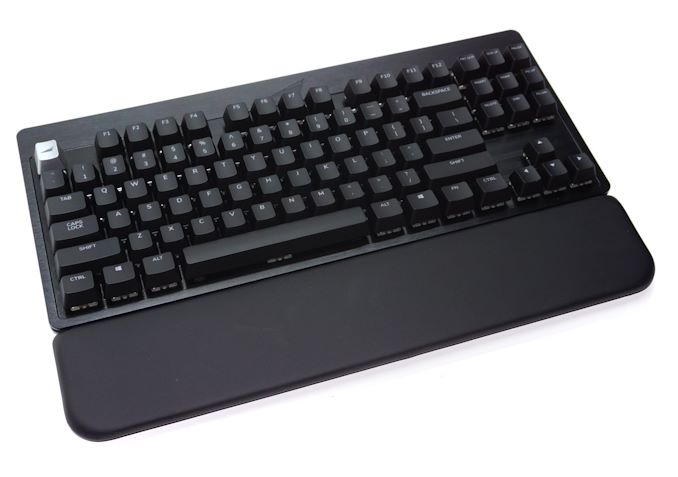
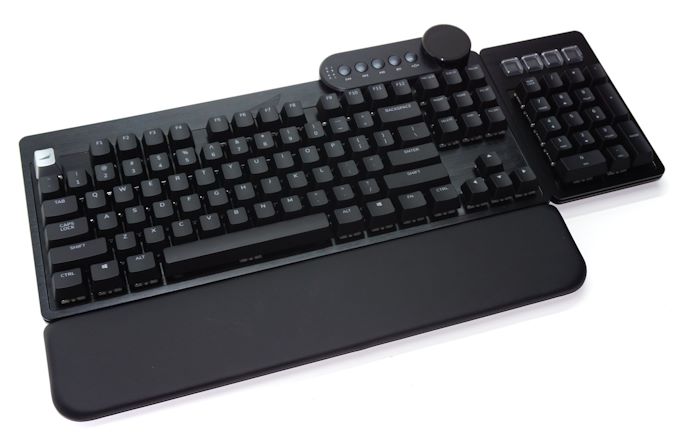
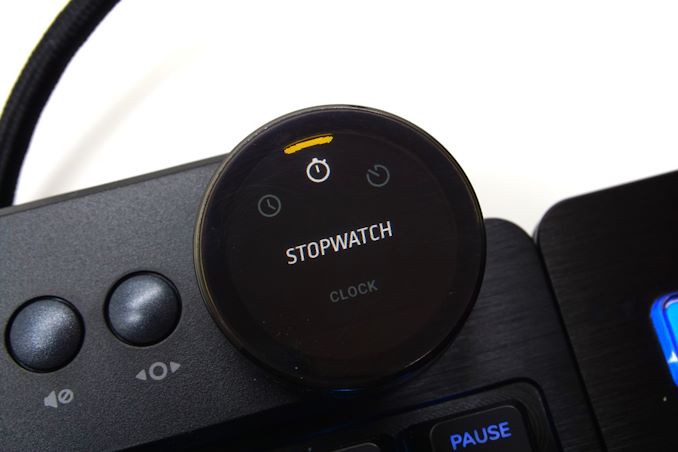

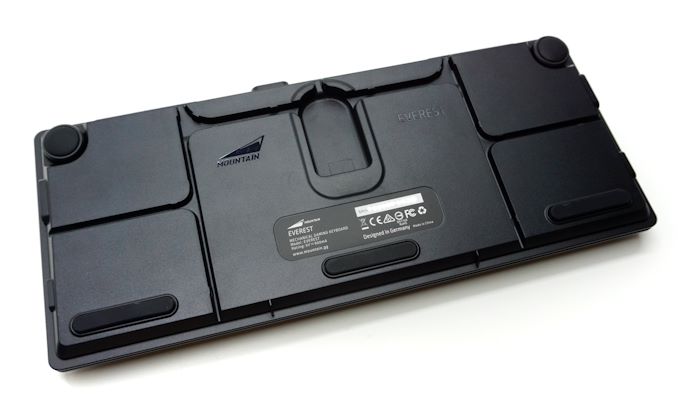
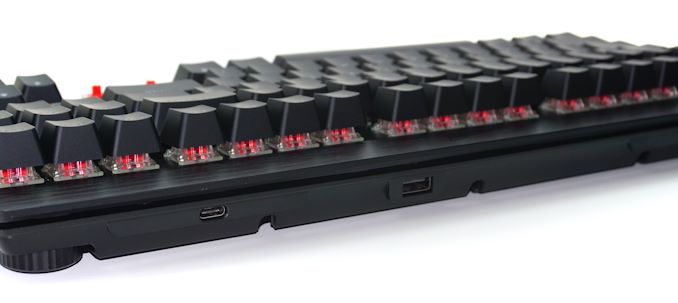


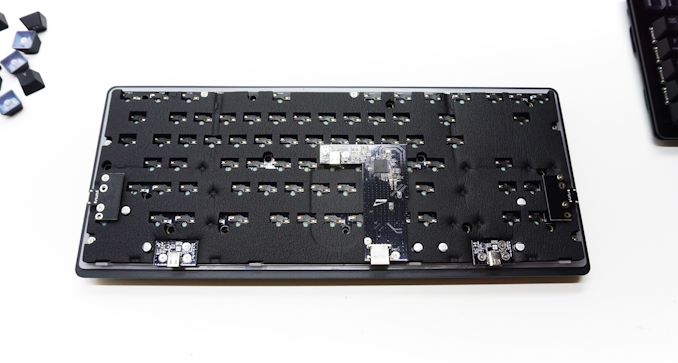









54 Comments
View All Comments
dreamslacker - Monday, January 24, 2022 - link
No, I did not see enough of the panel to determine if it's OLED or LCD matrix as the flex cable didn't leave enough slack and I didn't feel comfortable enough to put it through the routed slot on the PCB behind it.It could be an LED backlit LCD display for sure. Dismantling the numpad is somewhat tricky as well since they didn't re-orientate the switches with the stabs. The stabs block the release latches on the switches so you get a bit of a chicken and egg problem. I had to partially release the stabs while picking at the switch latches to get it out.
Short_Circuit - Monday, January 24, 2022 - link
Thanks again.Must admit I'm really tempted to have a look under the hood to see what's going on under there. But at the same time it's only a keyboard and I'd rather Mountain (or the reseller) sorted it out. Decisions, decisions... :-/
dreamslacker - Wednesday, January 26, 2022 - link
Honestly, if you are looking for a well built keyboard to mainly program layers (change keymaps/ functions) record macros, there are probably better options out there.E.g. Keychron Q1 which has QMK compatibility - a separate numpad could be used as required.
Short_Circuit - Thursday, March 24, 2022 - link
Well, another, hopefully final, follow up to this for anyone who's interested.Credit where it's due, Mountain Support stuck with me - and, while it took a while, eventually accepted that the main keyboard was faulty - and replaced it. So I'm back to a keyboard that does everything it should all the tim.
Still a couple of areas for improvement in the Base Camp software, but hardware-wise, I'm now unreservedly happy with how this keyboard performs and working well with it.